Illustration by Cosme Studio
This was the decade that the full-length skate video was supposed to die. We began the 2010s with everyone insisting that Stay Gold would be the last full-length skate video. Then, Pretty Sweet was supposed to be the last full-length video. Some people thought that Static IV would be it — the end, no more full-lengths after that. But I feel like I heard someone say Josh was working on something new a couple months back? Idk.
The experience might’ve changed. We’re not huddling around a skate house’s TV covered in stickers to watch a DVD bought from a shop anymore (if this past weekend is any indication, it’s more like AirPlaying a leaked .mp4 file via a link obtained from a guy who knows a guy), but the experience of viewing a fully realized skate video with your friends for the first, second or twentieth time is still sacred.
Just as we asked for your votes for the five best video parts, we did the same for the five best full-lengths: if you could choose the five videos that defined the 2010s, what would they be? The results were a bit more surprising than the parts tally in some ways, given that it felt like independent, regional and newer, small brand videos dominated the decade, yet Big Shoe Brands™ and Girl + Chocolate still made their way into the list. The top-heaviness of some companies or collectives was less of a surprise, in that certain creators loomed large over the 2010s.
Like the installment before it, this list is sans comment for 20-11, and then via favors from writer friends for the top ten: here are the twenty best skate videos of the past ten years.
10. Vase (Jacob Harris, 2015)
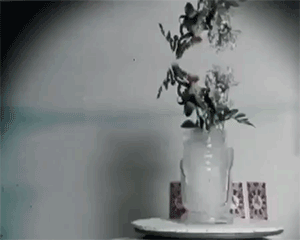
Blueprint Skateboards gave their last hurrah with Make Friends With The Color Blue in 2010. Sidewalk‘s epochal full-length, In Progress, arrived the following year. Then things went a little quiet for full-length productions in the U.K. When Vase came along in 2015, it had been a while since we received a full-length from an entity held unanimously in high regard.
Although they have little in common aesthetically, Isle became recognized as a sort of successor to Blueprint in its early days, largely due to Nick Jensen and Paul Shier’s involvement. The company launched in 2013, the same year that Jacob Harris premiered Eleventh Hour, which was great publicity for Isle, as its riders occupied the majority of the video’s screen time. When it became known that the company’s debut video was in Jake’s hands, anticipation united the scene.
Vase draws us along by hypnotic shapes, reflections, and glimpses of the team with silver balloons spelling their initials. Roy Orbinson’s “Running Scared” reaches an abrupt climax, and we drift into the video’s dreamworld of greys and blues. Tom Knox takes the opener, constantly switching between imaginative footwork and being outright fucking gnarly. A lap around St Paul’s Cathedral here, a switch ollie down a back alley stair-set in the double digits there; the amount of tricks in his lines might seem superfluous if anyone else could perform them. Nick Jensen skates with the energy of a man with something left to prove although though he certainly doesn’t. We’re flown for a tour of downtown L.A. courtesy of Paul Shier and Jon Nguyen. We’re reunited with London at Southbank’s undercroft, which gets a battering from Casper Brooker in his coming-of-age part. Then, Chris Jones and Neil Young make this dream upbeat again. “The Bank Manager” lives up to his nickname and also tackles stairs, gaps, flips in and out of tunnel vision and ends the video with highly concentrated style in highly cropped trousers.
Roy Orbison’s familiar voice is back, singing about dreams as the ethereal world we’re awaking from starts to sink into memory. There’s a little déjà vu, but overtly comparing Vase to what has gone before it is a disservice to Harris and Jensen’s accomplished vision. For a British skateboarder, Vase doesn’t so much romanticize the everyday as it does mythologize it. — Farran Golding
9. The GX1000 Video (Ryan Garshell, 2016)

From the title on, The GX1000 Video is as direct as it gets. Even in extending its web series format to a full-length, there is no room for bloat and no bones about the business at hand: powerful street skating. The GX crew almost singlehandedly reasserted a post-millennial legacy in real — and real dangerous — street skating, slicing through the decade’s colossal onslaught of NBDs on tourist marble. Jake’s no complys, Al’s wallies, and Brian’s switch ollies take a classicist’s approach to the streets while applying a present-day knowledge of what is now possible with bodies and boards. This amounts to a bounty of some of the best footage from this trio, not to mention the most intriguing stylings Marius Syvanen has offered, and Yonnie Cruz skating at speeds that are gleefully unconcerned with safety. This is skating you feel when watching, one big shared part featuring a crew of friends and like-minded skaters that more or less became the archetype for how a full-length video looked in the second half of the decade.
Some of what is happening is unsettling, and not just in the suspense of a hill bomb as the titular VX zooms out to the horizon. There’s the blatant disrespect of an outdoor sleeper by ollie or the physical removal of a person in the way of a spot that go unexplained, where the video treats its human subjects as anything but. In the hands of Ryan Garshell, there is a tendency to want this rawness to feel testimonial, but there’s nothing necessary about it. Nonetheless, The GX1000 Video presents its unparalleled skating along these incidents without discrepancy, allowing the viewer to draw their own relationship between the skating and the environments it’s happening in. Part of what makes it so memorable is this adherence to these dated skate video tropes and, as a style, these moments punctuate the seriously ludicrous skateboarding. At times, like at the video’s end, they find the right balance and help elevate the visuals into near poetry. The swift removal of a printed anti-skateboarding law from a stuffy lady’s hand is counterbalanced with the joy of children delighting in the pleasures of skating before the deep hum of Nina Simone’s “Feeling Good,” and reminds us of all the intangibles: the speed, the ride, the freedom. — Adam Abada
8. We Blew It At Some Point (Pontus Alv & Tor Ström, 2018)

Few releases of this decade invite us in for full viewings every time, but We Blew It At Some Point is one of them — if not the most rewatchable video of the 2010s. Polar’s second full-length opens with some of the most satisfying seven minutes in skateboarding and tumbles forth from there. It is a hazy, hot apartment dream about the coolest summer you ever had.
Of course, it is powered by the skaters and what they do — Nick Boserio and Emile Laurent’s Portland tag-team, Oskar Rozenberg’s twisting impossibility and Hjalte’s Halberg’s honing of balance and stoke — but it is also the production and direction. The film’s arrow steadily points ahead and there is no time to waste. Tor Ström and others’ camera work is tight without losing perspective, and it is the first video in memory where sound design enters the conversation. Cheers and whoops linger, grinds travel in stereo sound. We Blew It At Some Point is immersive fun.
It is also a culmination, both of modern skateboard movie-making and the director’s own work. Previous flicks by Alv, like 2010’s In Search Of The Miraculous and 2016’s I Like It Here Inside My Mind, Don’t Wake Me This Time share the hallmarks (doubles chases, sessions at spots, musical call-backs) that make the video at hand what it is — novel yet firmly on the timeline of 30-plus years of skate video history. Yet here, Alv skips the symbolism and streamlines, showing instead of telling. In that way, We Blew It At Some Point is the closest to finding its miraculous. — Mike Munzenrider
7. Spirit Quest (Colin Read, 2016)

A great video will have shout-out-loud moments at tricks, but it is rare for editing to provoke jaw-dropping “how the fuck did they do that?” reactions. Colin Read’s almost impossible to describe Spirit Quest did just that.
The last decade has seen some influential new ways of presenting skateboarding in video form, often imitated but rarely, if ever, equaled. The fact that no one tried to replicate what Colin achieved with Spirit Quest is testament to how technically audacious it really was. The creation of a full-length video is maddening enough without choosing to use two cameras to film two skaters simultaneously in one line, or incorporating the natural world alongside scratches and daubs of animation to morph Quim Cardona into his beloved Lion from Mount Zion. Bobby Worrest becomes a snake, Jimmy Lannon an ostrich. New York is turned into an urban jungle. Unashamedly conceptual as it may be, Spirit Quest never strays into pretense or self-indulgence.
Glitches from the camera getting kicked, chameleons, piranha’s teeth and Taylor Nawrocki’s head all somehow turn into the next spot through the magic of Colin’s editing suite and Cosme’s pen. The snaps and scrapes of boards reverberate through the soundtrack, but the video somehow keeps its feet on the ground and away from gimmicks. Spirit Quest is truly independent with no large-scale commercial backing, and is like nothing we have ever seen before. — The Palomino
6. Roll Up (Ryan Garshell, 2018)

We, as skateboarders, had nearly grown accustomed to the things that GX1000 does and captures by the ending months of 2018. GX vids reflect and embody the aversion to authority that attracted many of us to skateboarding in the first place. It is a bastion of the unadulterated zeitgeist of skating, in the Phelpsian sense, where you don’t let anyone tell you what to do, and property doesn’t matter, and nothing is too steep or fast, and your friends are your immediate family, and are you gonna roll up or should I?
San Francisco, as you’ve heard ad nauseum, has changed drastically since skateboarding’s inception. A safe haven for the nation’s eccentric became a tech-bro suburb, and the heightening popularity of our thing has operated on an inverse scale to the city’s acceptance of this: the only Olympic sport where they let you wear shoelaces as belts. Not that any civic government is going to celebrate people running stop signs going 30 mph on a piece of wood, but it takes a special one to say, put the traffic lights out of sync on the Dolores hill to keep people from comfortably bombing it.
In the wake of the so much that has happened over the past year, this video is loaded with meaning. It is a time capsule between eras in a city, in skateboarding, in the lives of all the people whose names many of us didn’t really know, labelling them “the GX dudes.” Six months before Roll Up came out, they were celebrated in GQ for being the “most fearless crew in skateboarding.” A couple months after Roll Up, and we have The New York Times enumerating the events and repercussions that have led to skateboarding’s need to re-assess our universal and unspoken rules. The article speaks on our collective need for “soul-searching” after a Black Rock security guard was left paralyzed after an altercation. Between that tragic misfortune and article, Jake Phelps dies. Then, Pablo Ramirez dies. Then, a couple months later, Supreme S.F. opens.
San Francisco is a big city, and cities are dynamic. In this decade especially, innovation and change seem to move faster than a feeble human can really process. In a vaccum, this is an incredible skate video. It takes the basic act, the point A to point B, and tests it at its furthest extremes. What happened in San Francisco has sadly assigned added worth to Roll Up as an artifact of skateboarding in a place that would face so much trauma, scrutiny, and success in the months to follow. We see the impact of Roll Up in its reinforcement of skateboarding’s self-evident truths. We see it in the P-Spliff memorial, the Phelper tribute, the kind words on that security guard’s GoFundMe from skaters around the world. It is hard to speak on all the controversy and sorrow that has befallen the skateboarding community of late. But at its core, skating is governed by the same shit as anything else — it’s life. Some things can be avoided, some cannot. We’re defined by our actions and the decisions we make, and we only get one each. — Zach Baker
5. I Like It Here Inside My Mind Don’t Wake Me This Time (Pontus Alv, 2016)
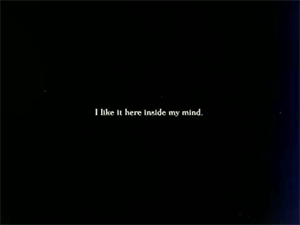
Perhaps no other brand has delivered as consistently as Polar this decade, and I Like it Here Inside My Mind, Don’t Wake Me This Time was the work that bumped them into another echelon. It is the most meticulous work of Pontus Alv’s video catalog, offering skits and shorts that situate the skating in a landscape of mental exploration. The video’s post-industrial playground backdrop offers a range of storylines to compliment the selective skating Polar became known for. It is hard to deny the world the video transports its viewers into, weaving you from part to part, skater to skater, with a blend of art direction and editing seen less and less on our shrinking screens.
In the fashion of early skate video juggernauts, the video offers something for everyone. Dane Brady opens it with the opus of his career, Hjalte Halberg skates street the way heads from the 1990s love to gush over but with an undeniable modern swag, Aaron Herrington locks in his graceful gnar, Oski comes into his own, and the Blobys round the thing out by taking us to a new board-grabbing, wall-bashing, Belle Époque-by-way-of-90s-club-kid Paris. Drawing from all facets of the skateboard community, I Like it Here Inside My Mind leveled Polar up into a veritable powerhouse, delivering on the promise of their superb shorter offerings and planting the brand, its skaters, and their style in the dead center of skateboarding’s consciousness. — Adam Abada
4. Call Me 917 (Logan Lara, 2017)

What is a skateboard company but a long-winded excuse to spend more time hanging out with your friends? Some of the most historically influential brands’ origin stories are as simple as that: guy on one company wanted to spend more time hanging out with guys on another company, so they started their own company. The goal of these companies’ videos was always to translate these friendships to the outside world; the sum of the company’s parts coming together to get you hyped to ask your friends if they’re going skating that day.
As skateboarding has grown and grown (and grown), “teams” began to feel like a check-list. Tech guy? Check. Hesh guy? Check. Transition? Check. Pretty boy with pared down selection of tricks but he’s really good at all of them? Check. Good at contests but still valid enough to be loved by some snobs? Check. Now, they are maybe on the team with an Olympian.
The 917 video is special in that it didn’t care about any of this. It felt like it was made for the twenty people who were around while they were filming it — the crew that kicked around flat tricks in the Rosyln parking lot as Nik Stain went down and up and back down the bank that Gino made famous, the friend who first found the cutty spot between two houses that Aidan ended up skating, the dudes whose day off got sidelined into becoming moral support for Max as he tried whatever the fuck he was trying — but in the best way possible.
Skate videos, at best, translate maybe 20% of the magic of being there to a third-party viewer. The twinkle in the lens that filmed the 917 video probably tripled that. I’m not sure a video of the past ten years has incited more smiles than this one. — Quartersnacks
3. “BLESSED” (William Strobeck, 2018)

If “cherry” was high school (you and your core group of skate friends pretty much dress the same, are into the same shit, etc.), then “BLESSED” is college — the group (in this case the core of Ben Kadow, Na-Kel, K.B., Sage, Sean Pablo, Aidan, and T.J.) is still tight, but everyone is on their own trip, embarking on a journey into the inner self, or some shit.
Strobeck tripled the runtime, but configured a more traditional skate video outline — a structure of individual parts, with the best part last. While “cherry” focused on New York and L.A., “BLESSED” brought in Paris, followed by an Embarcadero centerpiece. Holistically, the video serves as an archetype for a culture dealing with mortality, as Dylan’s energy permeates throughout. The first hour (!) or so of “BLESSED” functions as a prelude for a fully weaponized Tyshawn Jones. Probably the preeminent athlete in New York, T.J. makes an exponential leap from his previous part (Adidas’ Away Days) in a fashion unseen since, like, Mike Carroll from Not the New H-Street Video to Questionable.
And the scary thing is that it was only his second part. — Frozen in Carbonite
2. Stay Gold (Jon Miner & Mike Manzoori, 2010)

My first “industry” job was a desk job in sales and marketing. In my drawer, I had 50 copies of Stay Gold signed by Andrew Reynolds, and for three years, I sent out Jon Miner’s hour-long tearjerking mega production to customers who complained. What better way to console a kid whose grip had a bubble in it than a copy of Stay Gold signed by The Boss in gold sharpie? Still, I was reluctant every time I had to part ways. Can’t grip your own board? Fuck you. This is my Stay Gold. Your parents washed your Thrasher pullover wrong? Fuck you too, this is my Stay Gold. And perhaps I left my youthful self in one of those copies of Stay Gold. All 50 are now probably dwelling in the vaults of skate hoarders underneath their childhood bed, and much like Jumanji, those fold-over hardcopies of Stay Gold are begging to be released.
Brandon Westgate still stands out a decade later for having a quick snap on a high ollie and a humbleness you won’t find on The Nine Club Experience.
The stampede continued as Bryan Herman burst the schoolyard bubble, swerving away from the camera and cooly back towards it as he set up: flip over the bench, grind the bench, flip and slide the bench, nollie inward heelflip the bench. All this to a song which you remember if not for love, then annoyance. The kid from Baker 3 was now a man with so much calm control that it looked like he was playing skateboarding for fun – not as a profession. His ease borders on irritating and perhaps that is why Tom Waits’ “Top Of The Hill” is my least my favourite Tom Waits song.
Marquis Preston took down familiar Foundation-esque spots only to soon fall into the “Where are they now?” category – the stuff of which Chrome Ball Incident interviews are made of. Preston’s use in the video is extremely underrated, but his footage is unforgotten.
Reynolds’ part is a flawless victory after the final dice roll. The Boss’ character arc was complete, and anything after this part will always be a bonus that we don’t deserve.
In 2010, I had 50 copies of Stay Gold. In 2019, I have zero. If you’re one of the customers who sent a complaint to my employer, then I hope you enjoyed watching my favorite skate video. If you can still hear the thrumming of Dead Meadow from the opener, then maybe it is time to reopen on the box, and unleash a 28-year-old Heath Kirchart fanboy who has been stuck on that bonus section for the past ten years. — Fraser Doughty
1. “cherry” (William Strobeck, 2014)

Supreme’s dominance in skateboarding on the cusp of the 2020s is so pervasive and brawny — they touched a billion and still lead the league in t-shirt premiums — that it is easy to forget the gamble that “cherry” represented roughly one eternity ago, in 2014. You had Bill Strobeck, known mainly at the time for his VX archive-dredging YouTube burners, attempting his first full-length for a company that had never made a video, while steering away from bankable pros like Koston and A.V.E. to formulate a new team as he went along, based around a handful of little-known kids. It arrived mostly in black and white, unconventional in structure with only a few dedicated parts, leaning on a “120 Minutes“-heavy soundtrack that increasingly screens as classic rock. Dudes tucked in their t-shirts. All long-lens in-n-out zoomers take note: binning the rulebook worked.
“cherry” hit less like an event vid, and more like a document. Here is the new breed — Na-kel Smith hardflipping and handspringing, Sean Pablo’s curated crouch, Kevin Bradley’s lazy float and Sage Elsesser’s cracking leaps, Tyshawn Jones unloading on the courthouse — here is what they wear, how they live. Here are the old heads putting them on — piss and vinegar Jason Dill switch backside nosegrinding, Mark Gonzalez’s yelping contortions, Paulo Diaz in the warp zone, and Dylan Rieder, razor sharp and majestic through L.A. schoolyards. These are career iconoclasts arguing against skating as some strictly skills-centric meritocracy, and in favor of those whispered intangibles, style, look, point of view — an alchemical match for a venerable clothes label looking to restake its claim in skating, and a crew of hungry kids.
“The video is meant to represent what skateboarding is like right now,” Bill Strobeck told QS before it came out. “Maybe in ten years, people will look at ‘cherry’ and be like ‘Oh, that’s what it was like back then.'” We’ll be there soon. — Boil the Ocean
Previously: The Best Video Parts of the 2010s



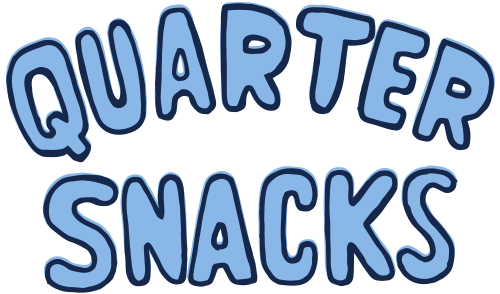
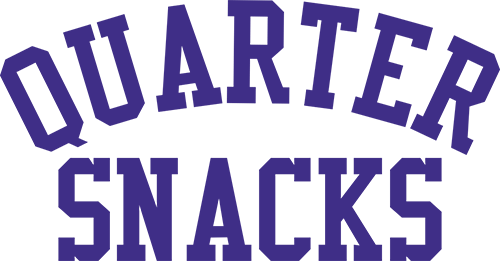

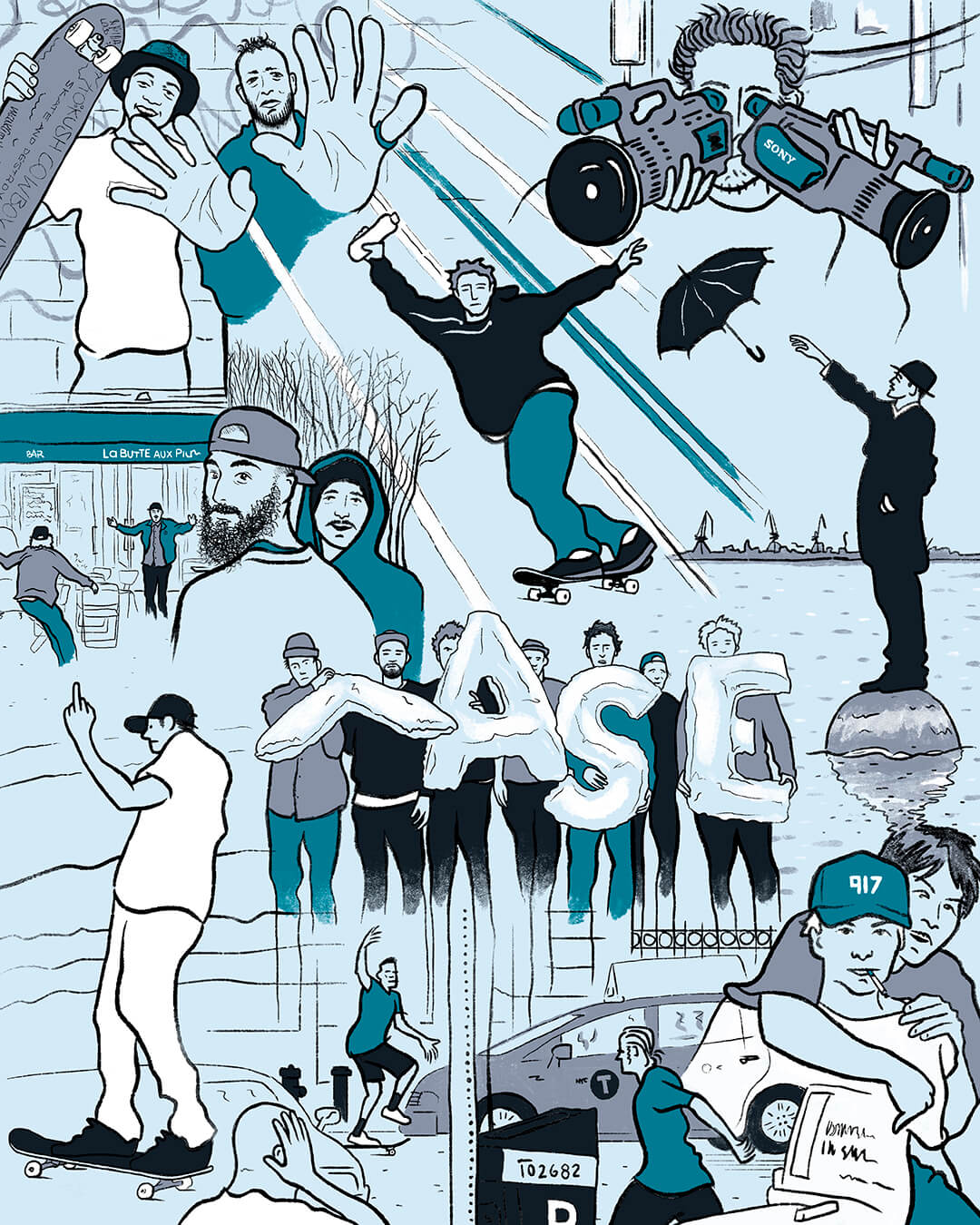
Not a single Sabotage Vid on this list and yet y’all have no problem sucking Pontus’s dick. Bunk.
Really can’t complain with this list.
“ attempting his first full-length for a company that had never made a video”
Thomas Campbell made “A love Supreme” in 1995
https://pitchfork.com/thepitch/1082-the-other-a-love-supreme/
Quick correction, Sour Solution II premiered ealier this year.
You’re right, just found the premiere flyer online. Fixed it :)
moments like these make skateboarding so much special to me
Stay Gold – ͜ –
Somebody tell “Outraged Reader” up there that he’s a dipshit and this list was voted on by the public, not curated by staff. Cool to see what parts meant the most to readers and how skateboarding has changed/evolved in the last 10 years
Boil the ocean is truly the best skate writer in the game rn. On a different level – the diction, the metaphors, the cultural references, and general elevation of the *skate journalist* form. And of course thanks to snack man for facilitating and keeping the best website + content going. :)
@Radiate Skate. Agreed. Zach Baker’s piece is equally on point though, solid writing. Great article pals.
Johnny Wilson and LurkNYC are the Papoose and DJ Kayslay of 2010s skating
Passport Video Kitsch should be on the list
Adrenaline Junkie should be up there too
1. Sabotage4
2. GX1000
3. Bronze ‘Solo Jazz’
4. Polar ‘I Like It Here Inside My Mind…’
5. Supreme ‘Cherry’
A lot of the videos on this list are 2015 and beyond. I feel like there was a lot of good skateboarding 2010-2014 that is being neglected. Is it cuz people can’t think back that far because we’re so burnt on content? Or am I just fried